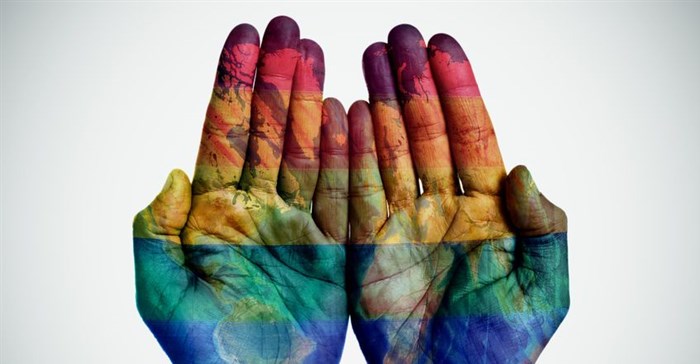An inaugural report has found that LGBTQ+ visibility in advertising is insufficient.

Source: ©123rf
123rf An inaugural report has found that LGBTQ+ visibility in advertising is insufficient
The report is the result of the first industry collaboration focused on increasing and elevating LGBTQ representation in creative content across the advertising industry, and brought together Kantar, the global leading marketing data and analytics company, and Glaad, the world's largest LGBTQ+ media advocacy organisation.
Advertising Visibility Index
The partnership debuted the Glaad and Kantar’s Advertising Visibility Index, a pioneering research report that delivers a data-backed reality check on LGBTQ+ representation in advertising, coupled with a playbook for brands to improve LGBTQ+ visibility in their ads.
An industry-first, the Advertising Visibility Index, which also launched at Cannes Lions 2023, is backed by an exclusive large-scale consumer survey of 1,000 US adults aged 18 and over.
The report includes an innovative, contemporary and proprietary scorecard developed by Glaad, which acts as a benchmark of best practice for marketers, setting out its highest standards for LGBTQ+ representation, visibility and belonging in media.
Glaad president and CEO, Sarah Kate Ellis says that the ad industry is decades behind television and film when it comes to LGBTQ inclusion. “But consumers are ready and willing to see the industry grow the quality, quantity, and diversity of ads.
She adds, “Brands that keep us invisible to appease anti-LGBTQ activists are not only missing a large and loyal consumer base today, but are missing a future generation of consumers and employees who demand that brands include LGBTQ people and other diverse communities in authentic and organic ways.”
Insufficient inclusion for ads
Separate from this report, an analysis of Kantar’s database of over 250,000 ads found that only 1-2% of all ads in the U.S. include clear LGBTQ representation.
Comparatively, the findings of this 2023 Advertising Visibility Index reiterate Kantar’s data and echoes insufficient inclusion for ads.
Establishes a benchmark
Glaad’s Advertising Visibility Index Scorecard establishes benchmarks for the industry to show the quantity and quality of LGBTQ representation in advertising.
To get a sense of how inclusive LGBTQ ads are right now, the scorecard evaluates the kind of representation present, the type of LGBTQ content illustrated to audiences, and how much screen time LGBTQ people were given as well as when and where these ads aired.
Ads were given a rating on a 5-point scale that ranged from Failing to Excellent.Quality was also considered against consumer perception.
A consumer perception study was created to understand what consumers deemed important in LGBTQ representation and corporate responsibility to inclusion and measured their awareness of inclusive advertising.
Key findings from the Report
Key Findings from the Report include:
- When measuring the quantity and quality of LGBTQ+ inclusive ads among the top-spending brands on TV, the study finds none of the LGBTQ+ inclusive ads received a rating higher than ‘Insufficient.’
- 88% of LGBTQ+ U.S. consumers agree brands should strive for positive, multi-dimensional, and human representation when including LGBTQ+ people in advertising or content. Note that 79% of non-LGBTQ+ Americans also agree with this statement.
- A majority of Americans believe representation within current advertising does not reflect the intersectionality of their identities across their communities and backgrounds, despite such high majorities of consensus surrounding the need for LGBTQ+ representation in advertising or content:
- 58% of LGBTQ+ Americans believe current advertising reduces people to only one aspect of their identity.
- 51% of non-LGBTQ+ Americans believe current advertising reduces people to only one aspect of their identity.
- Two-thirds of Americans (66%) feel advertisers have a responsibility to give visibility within their content for LGBTQ+ individuals, couples, families, and communities. Note that among Hispanic/Latine communities, this figure is pronounced as a major majority (75%).
- LGBTQ+ celebrities are the least effective drivers for telling LGBTQ+ stories in advertising. Rather, displays of empathy and humanity (54%) and realistic stories (54%) tied for the most important for respondents.
Valeria Piaggio, Global Head of Diversity, Equity, and Inclusion, Kantar, comments, “Consumers have spoken — they want business to do better and are prepared to change their buying decisions if companies do not."
She adds that data from Kantar US Monitor finds that 67% of people state that it’s important for companies they buy from actively promote diversity and inclusion in their own business or society as a whole.
“This is why we are so excited to be partnering with Glaad to help empower marketers and advertisers do a better job in representing the LGBTQ+ community and remove the inhibition marketers’ experience in doing this work.”
Read the full report here.




















































